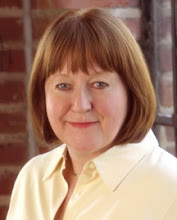In mid ‘80’s, when I was editor of Catalog Age magazine (now Multichannel Merchant), I published an account of talk given by Susan Love Edmondson on “me-too merchandising” at the Chicago Association of Direct Marketing annual meeting.
At the time Susie Love was General Manager, Avon Direct Marketing, although she had gained fame for co-founding and merchandising the highly successful, yet ultimately ill-fated Kaleidoscope catalog.
Kaleidoscope, along with Roger Horchow’s The Horchow Collection, broke new grounds in cataloging by developing specialty home catalogs geared to upscale women. These catalogs were fresh, beautifully designed and photographed, and offered expensive, hard-to-find luxurious products—quite a change from the L.L. Bean, the old Spiegel, Montgomery Ward and Sears catalogs that had, at the time, dominated the marketplace. Hard to imagine that time since specialty catalogs now rule the mailboxes.
The Horchow Collection is still around. Kaleidoscope, in one of the first big-media hypes in direct marketing, went into Chapter 11 and eventually out of business. Kaleidoscope scored a remarkable string of firsts—including selling hot air balloons on the cover (all sales had to be nullified because of government regulations) and introducing the Galileo clock which still finds itself on the pages of many catalogs.
In her remarks, Susie—now Dr. Love, a specialist in adoption issues in the Bay Area—observed:
Merchandising is the whole package, not just the selection of items. It’s identifying a target consumer group and providing the most highly edited, best value products to serve the needs and desires of that population. And it’s packaging your sales offer in such a way that it’s easily identifiable as you.
Choice, she went on to explain, “must always be made in terms of identity.” By choice, she meant product choice and catalog presentation, but she could well have applied it to design, product development, visual display, and store design.
From the late ‘80’s until the present, we have seen nothing but “me-too” retailing, in spite of the volumes of books, articles, and presentations made about branding. It’s been difficult for quite some time to tell which catalog you saw that item in because so many catalogs offer nearly the same items. Stores with white walls, blonde wood and metal/glass fixtures are so commonplace that you can’t tell a J.Crew from a Banana Republic (remember the original from Pat and Mel Ziegler?) or a Gap from a Benetton.
All of this brings me to Cathy Horyn’s recent remarks in the New York Times about the opening of Topshop—London’s recent import to the US:
The Topshop folks get almost everything right. The atmosphere is fun and exciting (it makes minimalist Uniqlo up the street look anemic). Although the range of merchandise is quite broad, from adorable blouses and cool fleece pants to Kate Moss’s very cute line, you feel there’s a reason for everything—that the Topshop designers and merchandisers said no more than they said yes. And the prices are great, from high to low. I saw at least a dozen things I wanted to buy, most of them for under $150. What’s more, I liked being in the store—and when has anyone said that lately?
The nation is lost
-
In this terrible time, what disappoints and angers me so about my own field
of journalism — to which I have devoted 50 years of my life — is its
refusal ...
1 month ago


No comments:
Post a Comment